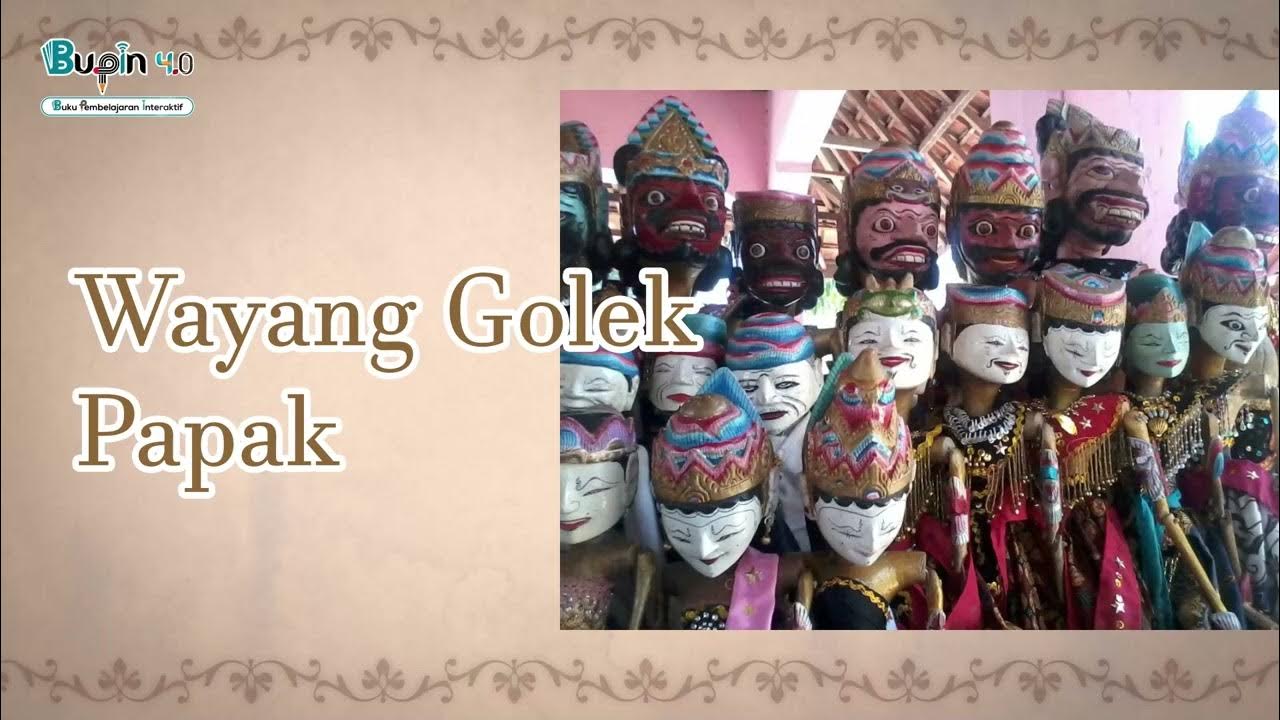Begini Proses Pembuatan KUJANG, Senjata Tradisional Sunda | TAU GAK SIH (08/01/21)
Summary
TLDRThe video script explores the traditional art of crafting 'Kujang', a traditional weapon from the West Java region, which dates back to the 8th century. It features Abah Wahyu, a 68-year-old master blacksmith, who shares his expertise in making this unique weapon. The script delves into the process, from selecting various materials like iron and steel to the forging and shaping of the Kujang. It also touches on the cultural significance and the philosophical values attached to these weapons, comparing them to the revered Katana of Japan. The video provides insights into the rarity of skilled craftsmen and the effort involved in creating these traditional weapons, highlighting the importance of preserving such cultural heritage.
Takeaways
- 😀 The script is a transcript of a video featuring a beautiful artist named Iya who is visiting a traditional weapon-making process in Bogor.
- 🤔 The artist expresses her curiosity and boredom with the traditional weapon, the 'Kujang', and its significance in the region.
- 🔨 The video introduces a master craftsman named Pak Wahyu Affandi, who is also known as Abah Wahyu, a 68-year-old expert in making 'Kujang'.
- ⚔ The 'Kujang' is a traditional weapon from West Java, Indonesia, with a history dating back to the 8th century.
- 🔧 The process of making a 'Kujang' involves various materials including iron, steel, and even bike chains, which are heated and shaped.
- 🔥 The metal must be heated to approximately 1200 degrees Celsius for forging, which is a physically demanding task.
- 👴 Abah Wahyu has been making 'Kujang' since 1995 as a hobby, showcasing the dedication and passion for this craft.
- 🛠 The video explains that the 'Kujang' has different types and each type has a unique name and shape, inspired by local folklore.
- 🌟 The 'Kujang' is not just a weapon but also has a high philosophical value, similar to the Katana in Japan.
- 🏺 There are also decorative 'Kujang' made from brass, which are more affordable and come in a range of prices.
- 🎁 The video concludes with the artist receiving a 'Kujang' as a gift from Abah Wahyu, symbolizing the preservation of cultural heritage.
Q & A
What is the main topic of the video script?
-The main topic of the video script is the traditional Indonesian weapon known as 'Kujang', its history, the process of making it, and its cultural significance.
What is the historical significance of the 'Hujan' mentioned in the script?
-The 'Hujan' is a traditional weapon from the West Java region that has been used since the 8th century. It is significant due to its historical use and cultural importance.
Who is Abah Wahyu in the context of the script?
-Abah Wahyu is a master craftsman, known for his expertise in making 'Kujang'. He is referred to as 'Empu', a term used for experts in crafting traditional Indonesian blades.
What is the age of Abah Wahyu when the script was written?
-Abah Wahyu is 68 years old at the time the script was written.
What materials are used in making a traditional 'Kujang'?
-Various materials are used in making a 'Kujang', including iron from different sources such as chains, motorbike chains, and other types of iron.
What is the approximate temperature required to heat the iron for making 'Kujang'?
-The iron needs to be heated to approximately 1200 degrees Celsius for forging.
Why does Abah Wahyu use a machine for forging instead of manual forging?
-Abah Wahyu uses a machine for forging because his physical strength is not as strong as before, and manual forging is a strenuous process that can take 6-8 hours a day.
What is the significance of the 'Kujang' in terms of ownership and use in traditional Sundanese culture?
-In traditional Sundanese culture, 'Kujang' is not only a weapon but also a symbol of prestige. It was a weapon exclusive to the nobility and certain officials, and its ownership and use were restricted.
What are the different types of 'Kujang' mentioned in the script?
-The script mentions six types of 'Kujang' based on the 'lulur pantun Bogor', which are 'cium kuntul', 'jago naga', 'badak', and 'bangkong', each with a unique shape and name.
What is the purpose of the red color that appears on the iron when it is heated?
-The red color appears due to the electromagnetic waves produced when the metal is heated. These waves are interpreted by the human brain as the color red, making it easier to shape the metal into various forms such as swords or knives.
What are the additional insights provided by the script about the 'Kujang' made from materials other than iron?
-The script mentions that there are also 'Kujang' decorations made from brass, which are more affordable, ranging from tens of thousands to millions of rupiahs, depending on the materials used and the complexity of making them.
Outlines

This section is available to paid users only. Please upgrade to access this part.
Upgrade NowMindmap

This section is available to paid users only. Please upgrade to access this part.
Upgrade NowKeywords

This section is available to paid users only. Please upgrade to access this part.
Upgrade NowHighlights

This section is available to paid users only. Please upgrade to access this part.
Upgrade NowTranscripts

This section is available to paid users only. Please upgrade to access this part.
Upgrade NowBrowse More Related Video

Documentary On The Traditional Art Of Kuda Renggong

Tuyệt kỹ dưới lớp sơn: Hành trình khôi phục sơn mài truyền thống | Nghệ nhân Hà Nội

"Kesenian Ulin Barong Sekeloa - Lomba Reportase Budaya" #lombareportasebudaya#lindungibudaya

SUKU SUNDA - VIDEO EXPLAINER

Tari Jawa Barat/ part 2/Tari Indonesia/Tari Nusantara/Tari tradisional Indonesia

S1 KURMER SMA 12 BAHASA SUNDA BAB 1 WAYANG
5.0 / 5 (0 votes)